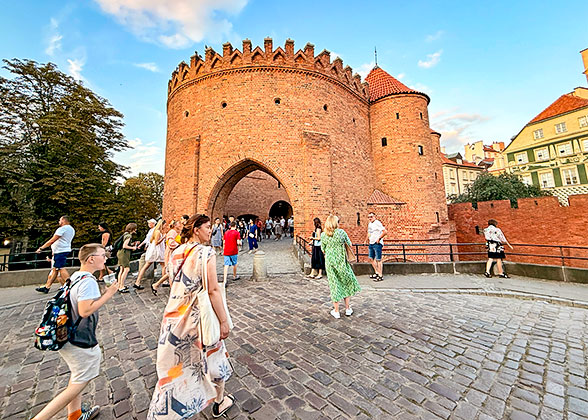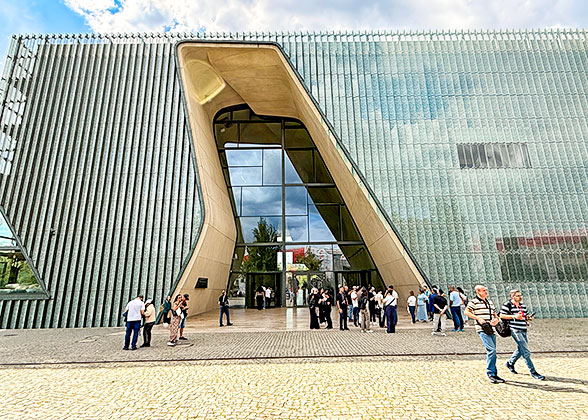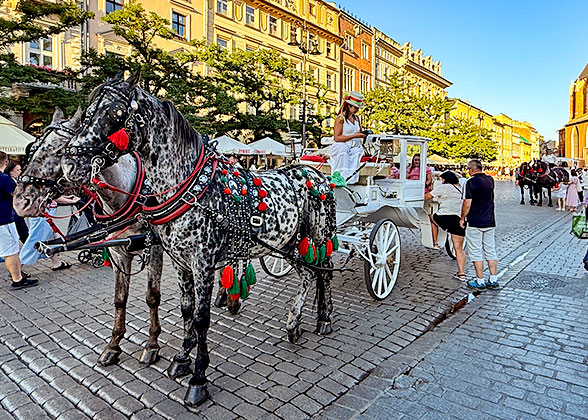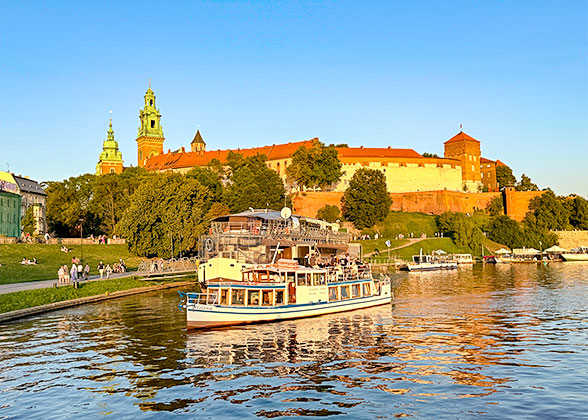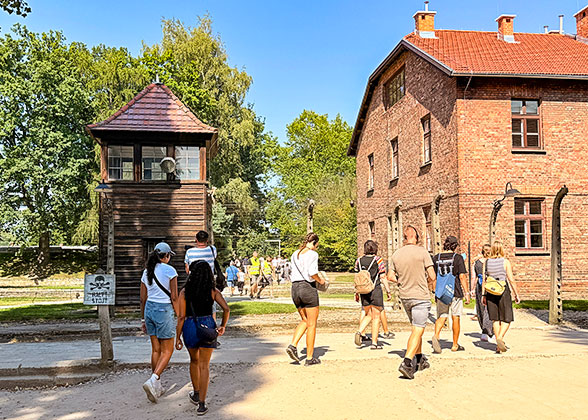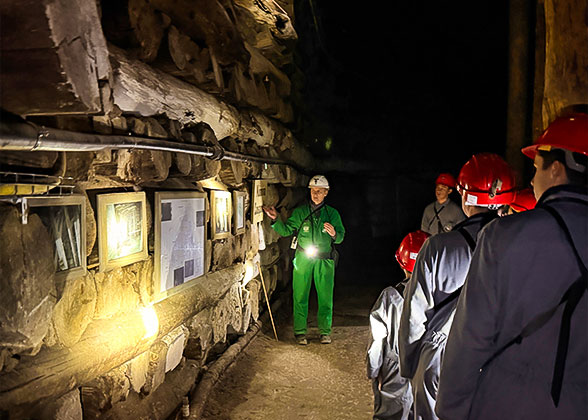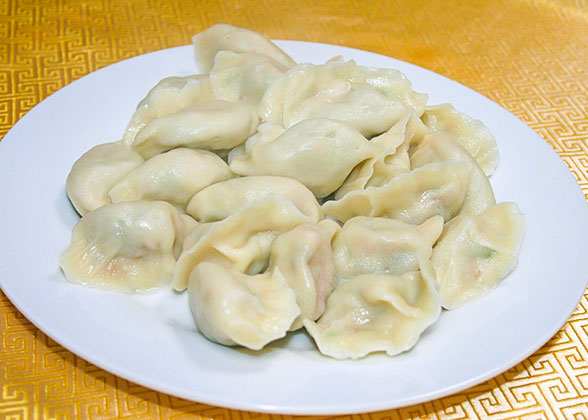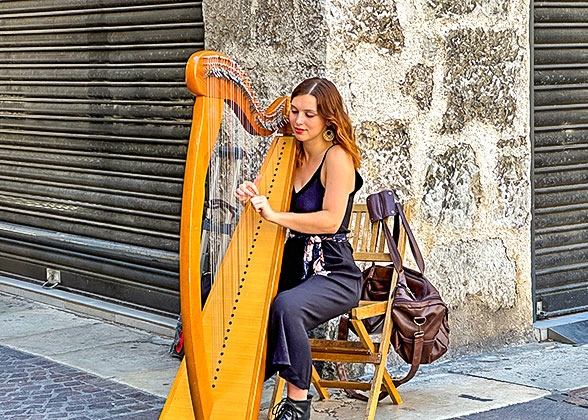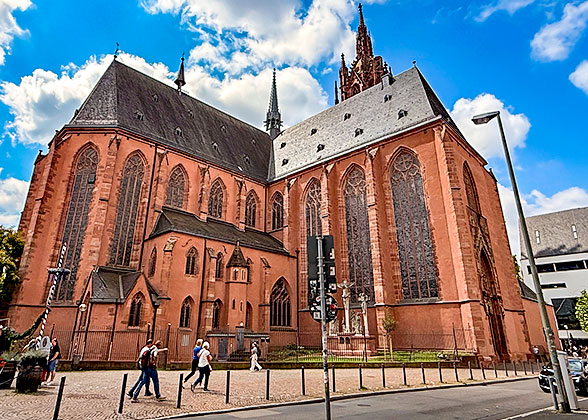Day 1: Arrival in Warsaw, Airport Pick-up
Thanks for choosing us and welcome to Warsaw! When you arrive at Warsaw Chopin Airport, your driver will warmly pick you up and send you to the hotel in 15 minutes. After checking in, you could either have a good rest in the hotel or have a leisurely walk in the old city by yourself to feel its charm.
► Tips on Money Exchange
The zloty (PLN) is the official currency of Poland. Banks, ATMs and currency exchange offices could be easily found in major cities. If you intend to exchange money at banks like PKO Bank Polski and Bank Pekao, please pay attention to the office hours. A better choice is, finding a Kantor currency exchange near your hotel, which provides more favorable rates. Card payments are usually convenient in Poland. Remember to choose to be charged in zloty, which can help you save some money.
► Getting around in Warsaw and Krakow
Public transportation in big cities of Poland is quite efficient, so if you want to explore the city on your own, this is the most recommended way. Both Warsaw and Krakow have bus and tram systems, and there are also two metro lines in Warsaw. Most travelers’ choice is to buy time tickets which allow unlimited transfers in certain periods of time (20 minutes, 75 minutes, etc.). The cost is about 1 USD. The Jakdojade app could help you plan a route and buy a ticket online.
Accommodation: Novotel Warszawa Centrum, Warsaw (4 stars) or similar
|
Day 2: Warsaw Highlights: Castle Square, St. John’s Archcathedral & Museum of History of Polish Jews
Visitors on the Castle Square, Warsaw Today, your private guide will pick you up from your hotel and accompany you to visit some famous sights in Warsaw city center. As the capital, Warsaw suffered severe damage during World War II (1939-1945 AD), and about 85% of the buildings were destroyed by the Nazis. The city was restored based on historical materials, and monuments and museums were gradually established. Nowadays, Warsaw has recovered from the shadow of war, and is becoming a vibrant metropolis. We’ll first go to Castle Square, which is the starting point of the Royal Route and also the entrance from Warsaw’s modern downtown to the bustling Old Town. Standing in the center of the square is the 22-meter-tall (72 ft.) Sigismund’s Column. First built between 1643 and 1644 AD, it features a monument to King Sigismund III Vasa (1587-1632 AD). During his reign, the capital of Poland was moved from Krakow to Warsaw. The striking brick-red Baroque building behind the column is the Royal Castle - the former palace of the Polish royal family. It is now a national museum, housing artworks from the 16th to the 18th century as well as the royal thrones and swords. Next, proceed to St. John’s Archcathedral, one of the oldest and most significant cathedrals in Warsaw inscribed on the UNESCO World Heritage list. Its red-brick Gothic-style building, without luxuriant decorations inside, creates a solemn and peaceful atmosphere, and was once used for coronations and funerals. Its well-preserved crypt is the last resting place of generations of bishops, royal members and dukes including Poland’s last King Stanislaw Augustus (1732-1798 AD) and Nobel Prize winner Henryk Sienkiewicz (1846-1916 AD). Keep going and we’ll come to Old Town Square, the heart of Warsaw Old Town, whose history can be traced back to the 13th century. Rebuilt vintage buildings around the square have been transformed into boutiques, cafes, and restaurants, among which street artists and handicraft vendors are easy to encounter. There is an elegant mermaid statue in the center of the square, which is said to symbolize the story about the origin of the name “Warsaw”. Then, let’s go to Lazienki Royal Park, the largest park in Warsaw, notable for housing Lazienki Palace, which is a water palace and the summer residence built for Poland’s last King in 1674 AD. Squirrels, peacocks and foxes live in the lush gardens of the park. The Monument to Frederic Chopin (1810-1849 AD) is hidden in the serene natural atmosphere. This Poland’s best-known composer spent the first half of his life in Warsaw. In memory of Chopin, the monument was erected on the 100th anniversary of his birth, and Chopin Concerts are held on the grass in front of it every summer. Afterward, we’ll head to the Warsaw Ghetto. By the 16th century, most of the Jews worldwide were living in Poland, while during World War II, hundreds of thousands of their descendants were murdered by the Nazis. First, visit the Umschlagplatz Monument. Umschlag Platz is a German word meaning “collection point”. This is the place where more than 300,000 Jews were sent to death camps between 1942 and 1943 AD, mainly to Treblinka Concentration Camp. Not far from the monument is the Monument to the Ghetto Heroes, in front of which Chancellor Willy Brandt (1913-1992 AD) of West Germany spontaneously knelt to pay tribute to the victims in 1970. Go ahead and we’ll visit POLIN Museum of the History of Polish Jews, which focuses on the “history of Polish Jews over a millennium” from the 10th century to the present. You could have a look at the artworks, photographs, and religious handicrafts related to Jewish heritage. After the visit, your guide will escort you back to the hotel. Meals: Breakfast Accommodation: Novotel Warszawa Centrum, Warsaw (4 stars) or similar
|
Day 3: Transfer to Krakow; Visit Krakow Old Town, St Mary’s Basilica & Wawel Hill
This morning, the guide will meet you at your hotel and we’ll set off to Krakow, which will take about 4 hours on the way. After arriving, check in at the hotel. Situated on the bank of Vistula River - Poland’s mother river, Krakow was the capital of Poland from 1038 to 1596 AD. In the afternoon, the guide will accompany you to unveil Krakow’s glorious past and rich heritage in the Old Town area. Following the sound from the horse-drawn carriages and the clop of the hooves on the paved ground, you’ll feel like you’ve traveled back to the 13th century when Krakow was a prosperous medieval town. In the middle of the Old Town Square is the statue of Adam Mickiewicz (1798-1855 AD), who is one of the greatest poets and political activists in Poland. Around the statue are Renaissance, Baroque and Gothic buildings like the grandiose Cloth Hall, remaining Town Hall Tower and beautiful churches. Let’s visit the St Mary’s Basilica, which stands out for its recognizable asymmetrical look. The brick Gothic church was first built in the 14th century, with twin towers which are respectively the 69-meter-high (230 ft.) bell tower and the 82-meter-high (270 ft.) bugle tower. Every hour, a melody of a bugle call rings from the top of the tower but breaks off suddenly in the middle. That’s to commemorate a brave bugler in the 13th century, who sounded the alarm before his throat was shot by an enemy arrow. Entering the church, your eyes will immediately be drawn upward to the starry blue ceiling, delicate stained glass, and the 13-meter-high wood altar which depicts the life of Virgin Mary. Later, we’ll head to Wawel Hill located near the old town, which is actually a little hill stands only 200 meters (656 ft.) above sea level. Since the 10th century, magnificent palaces have been constructed on the hill, and they served as the residence of Polish Kings until the 16th century. Wawel Royal Castle, one of the best-kept Gothic royal palace complexes in Europe, is a symbol of Poland’s history and culture. It has a rich collection of over 100,000 artifacts like paintings, weapons and armors, particularly the tapestries from the Renaissance period made from gold and silver thread, depicting biblical scenes on wool and silk. Besides the castle, you may notice the fierce Wawel Dragon by the river, which puffs fire from its mouth every five minutes. It will be interesting to learn about the famous Polish legend about the dragon. After the visit, the guide will escort you back to the hotel. Meals: Breakfast Accommodation: Hotel Mercure Krakow Stare Miasto (4 stars) or similar
|
Day 4: Krakow: Auschwitz Concentration Camp & Wieliczka Salt Mine
Today, the guide will pick you up at the hotel and accompany you to visit two of the highlights around Krakow. The first stop will be Auschwitz Concentration Camp, a heartbroken but also a significant historic spot which recorded the crimes of Nazi Germany in the 1940s. Since the first concentration camp was established in Dachau in 1933, more than 40,000 camps and other incarceration sites have been successively built by the Nazis in Germany and its occupied countries. You may have learned about this dark history of mankind from books, but stepping into Auschwitz, where 1.1 million people were killed, could bring you a more intuitive feeling and profound reflection. Initially served as a detention center for political prisoners, Auschwitz Concentration Camp gradually evolved into a death camp to achieve Hitler’s “final solution to the Jewish problem”. Countless innocent Jewish people were sent to Auschwitz from European countries, mainly Poland. Those who were able to work were forced to labor, while most of the prisoners were immediately sent to gas chambers upon arrival. Their belongings, including clothes, shoes, gold rings and any other valuable items, were shipped back to Germany for reprocessing. Although most of the buildings and structures in the concentration camp had been demolished before German withdrawal, some of the original barracks, guard towers, electric fences, and documents were left, providing us a chance to reveal the terrifying truth. Please note that, considering the heavy history of Auschwitz, you are suggested to dress appropriately and act respectfully. Next, let’s relax the mood and spend a wonderful afternoon at Wieliczka Salt Mine. At the thought of salt mines, you might associate them with damp and dim underground environment or miners’ hard work in tunnels. However, Wieliczka Salt Mine, as one of the first World Cultural Heritage sites included by UNESCO, could definitely surprise or even shock you. The mine has contributed a large amount of salt production and fiscal revenue to Poland over the past 700 years. Continuous mining and exploitation have made the mine an underground kingdom, with a depth of over 300 meters (984 ft.) and a length of 280 kilometers (174 mi.). The mine has a total of 9 levels, and 3 of them are open to the public. Besides the mining facilities, there are even spacious chapels, chambers, and restaurants inside. Everything you see in the mine, from the intricate chandeliers, lifelike Mary or Copernicus statues, to the biblical bas reliefs on the walls, are all carved from salt by miners. After the tour, the guide will escort you back to the hotel in Krakow. Meals: Breakfast Accommodation: Hotel Mercure Krakow Stare Miasto (4 stars) or similar
|
Day 5: Departure from Krakow, Airport See-off
This is the end of your Poland Warsaw tours with Wieliczka, Auschwitz, and Krakow. Your driver will send you to the airport and see you off there. We wish you a nice trip! If you want to visit more cities in Poland, heading to the northern port city Gdansk to explore the former industrial sites and enjoy the beauty of the Baltic Sea, or hiking to the peaks in Zakopane, the southernmost tip of Poland to admire the magnificent scenery of the Tatra Mountains, or if you want to extend your tour to Germany and Czech, please don’t hesitate to contact us so that our experts could customize a private itinerary for you.
► Recommended Activities for Late Departure (at your own expense)
Before your departure, it’s a good choice to go to Galeria Krakowska Shopping Mall opposite your hotel to enjoy a meal and soak up the modern atmosphere of Krakow. The mall is full of stores of international brands, souvenir shops and cafes. Sphinx is a popular restaurant with a rich variety of dishes. Its steaks and beers are the must-trys. The cost per person is about 30 USD.
Meals: Breakfast
|

